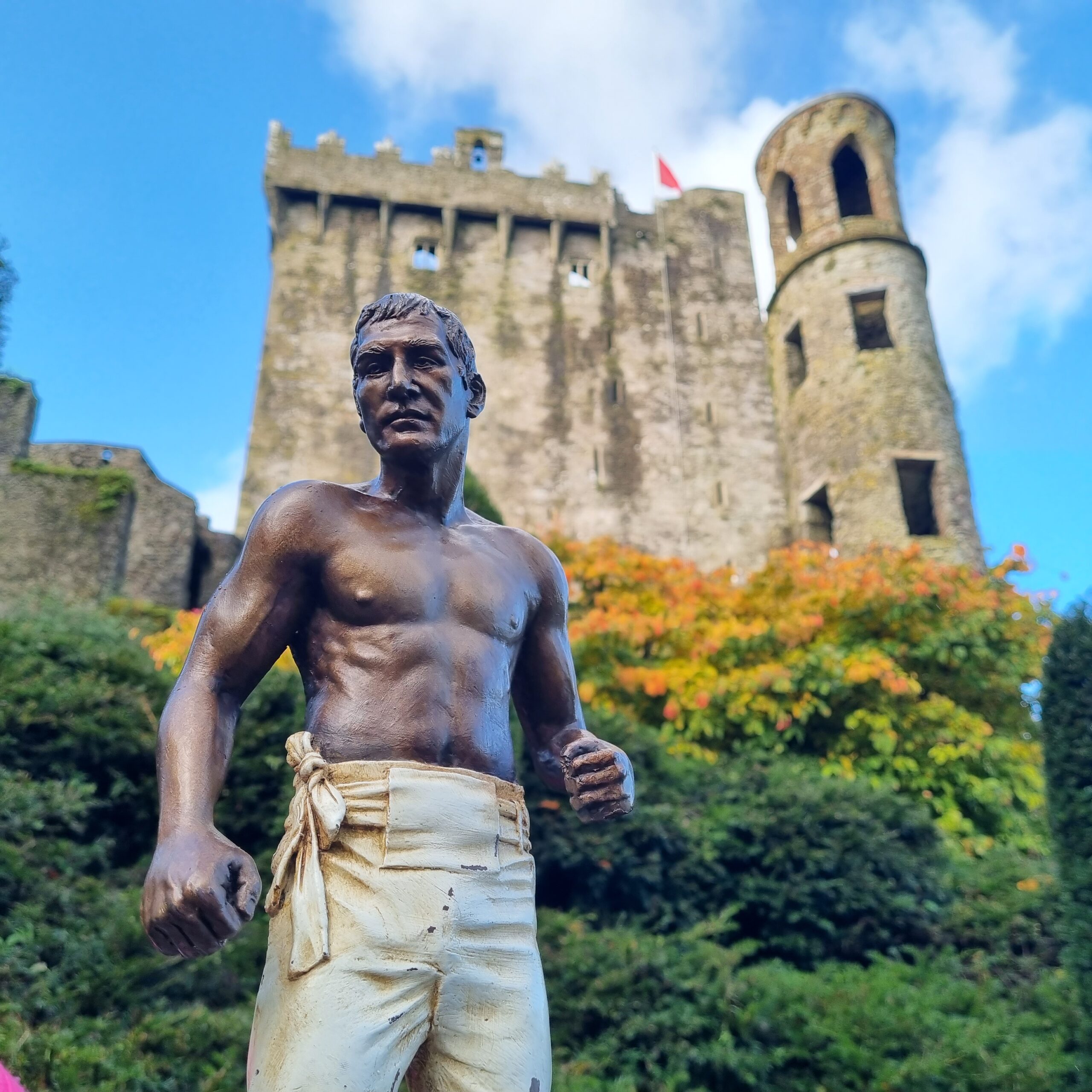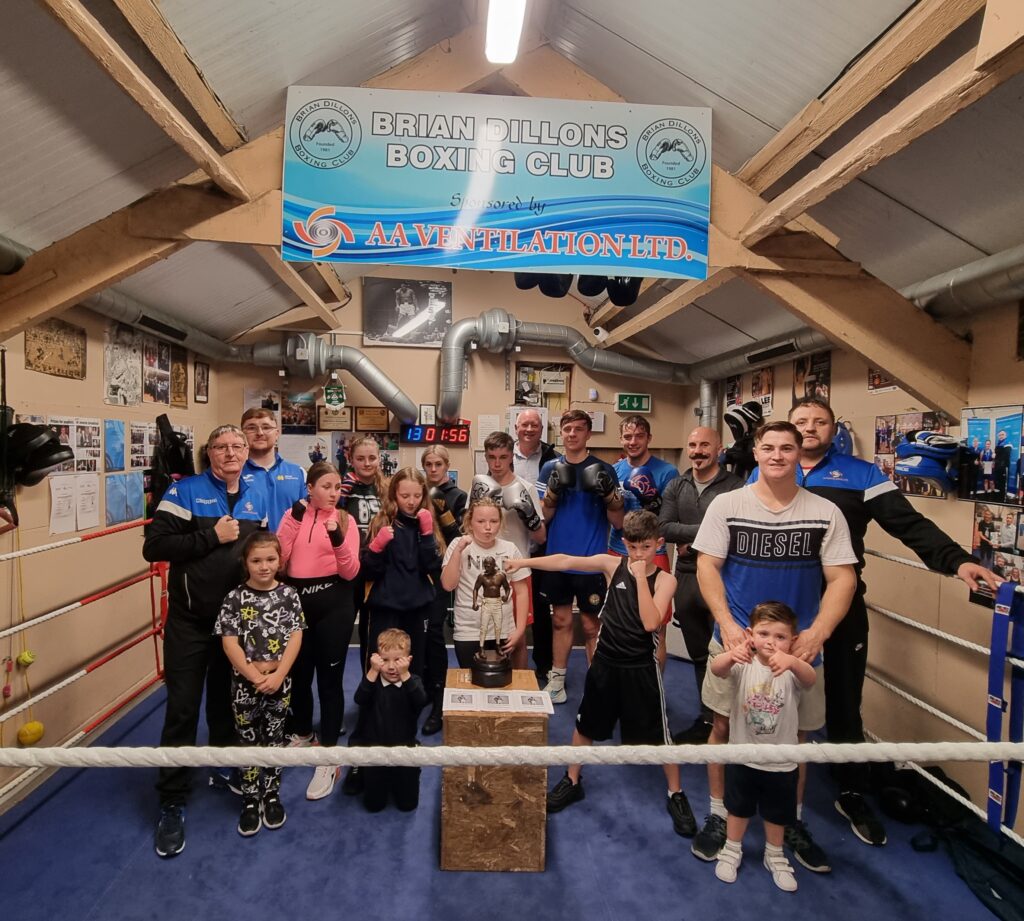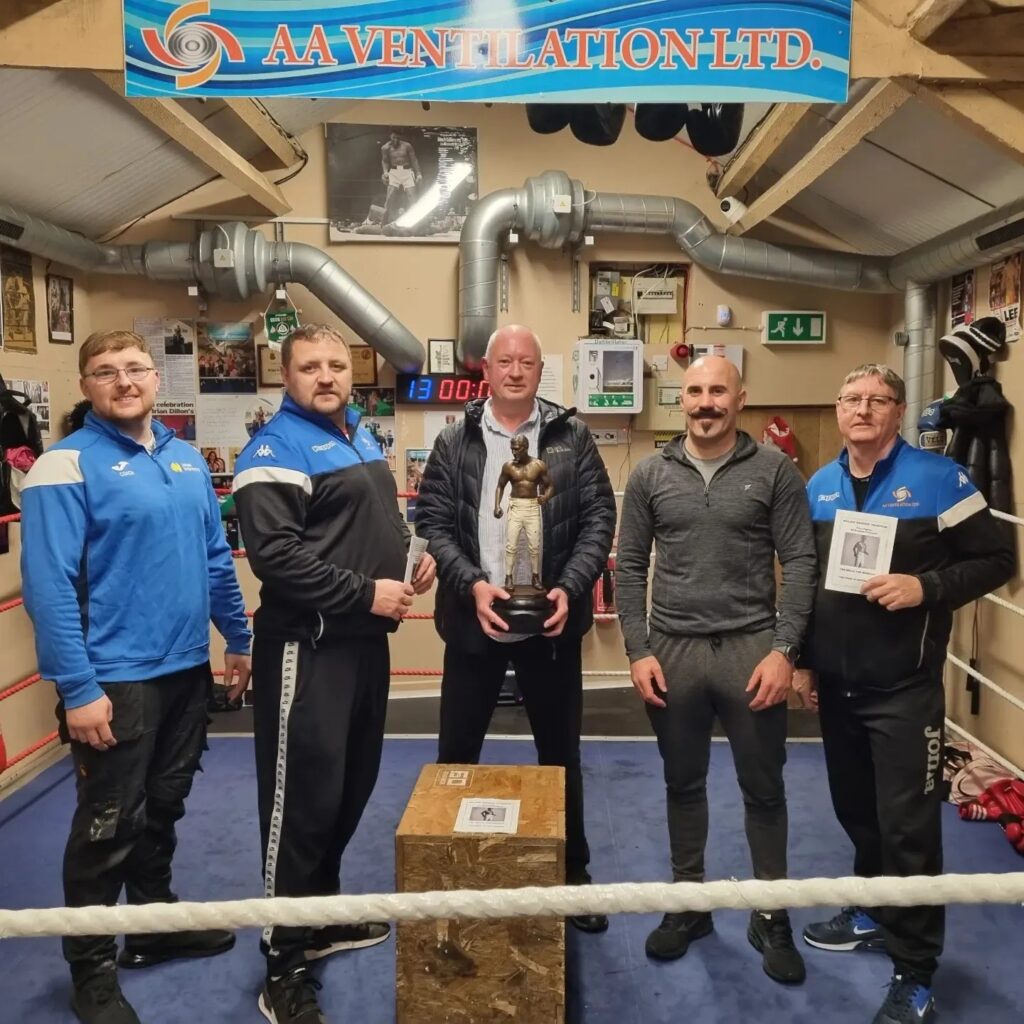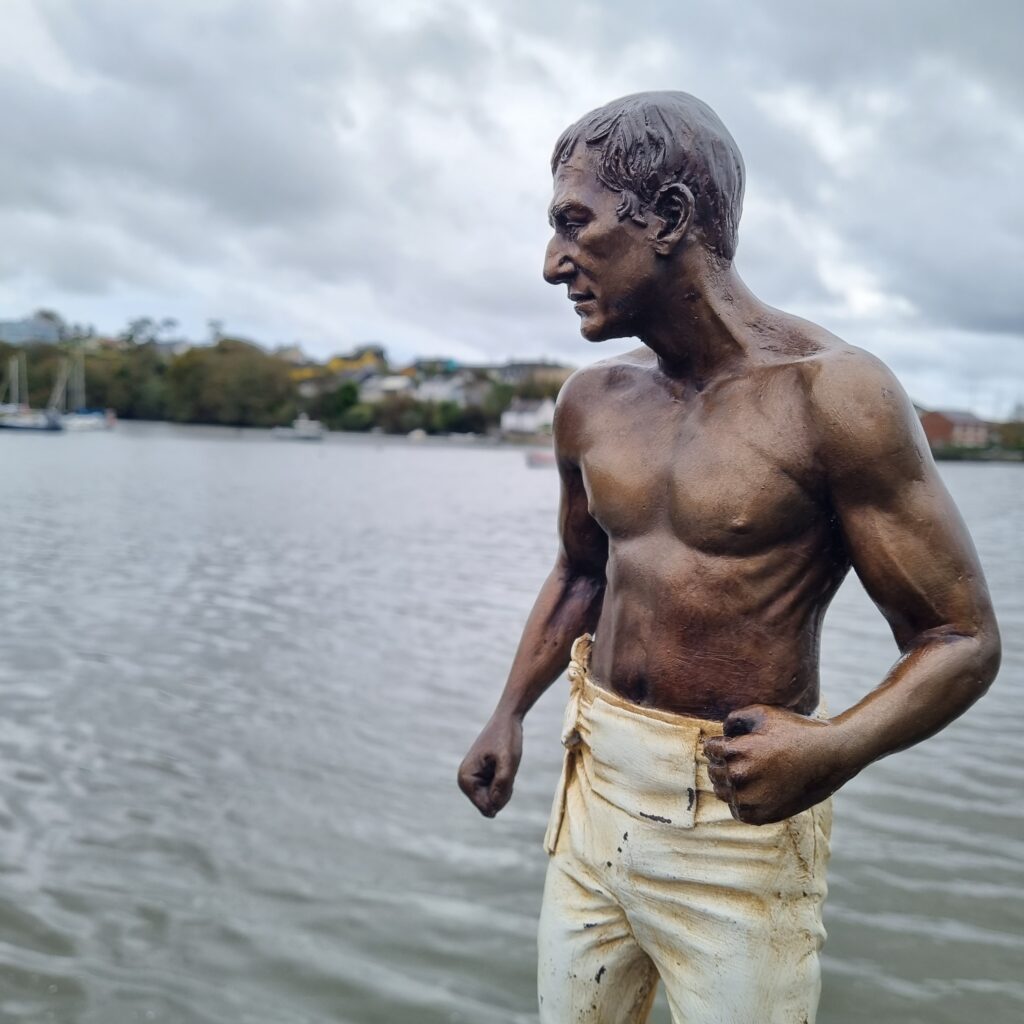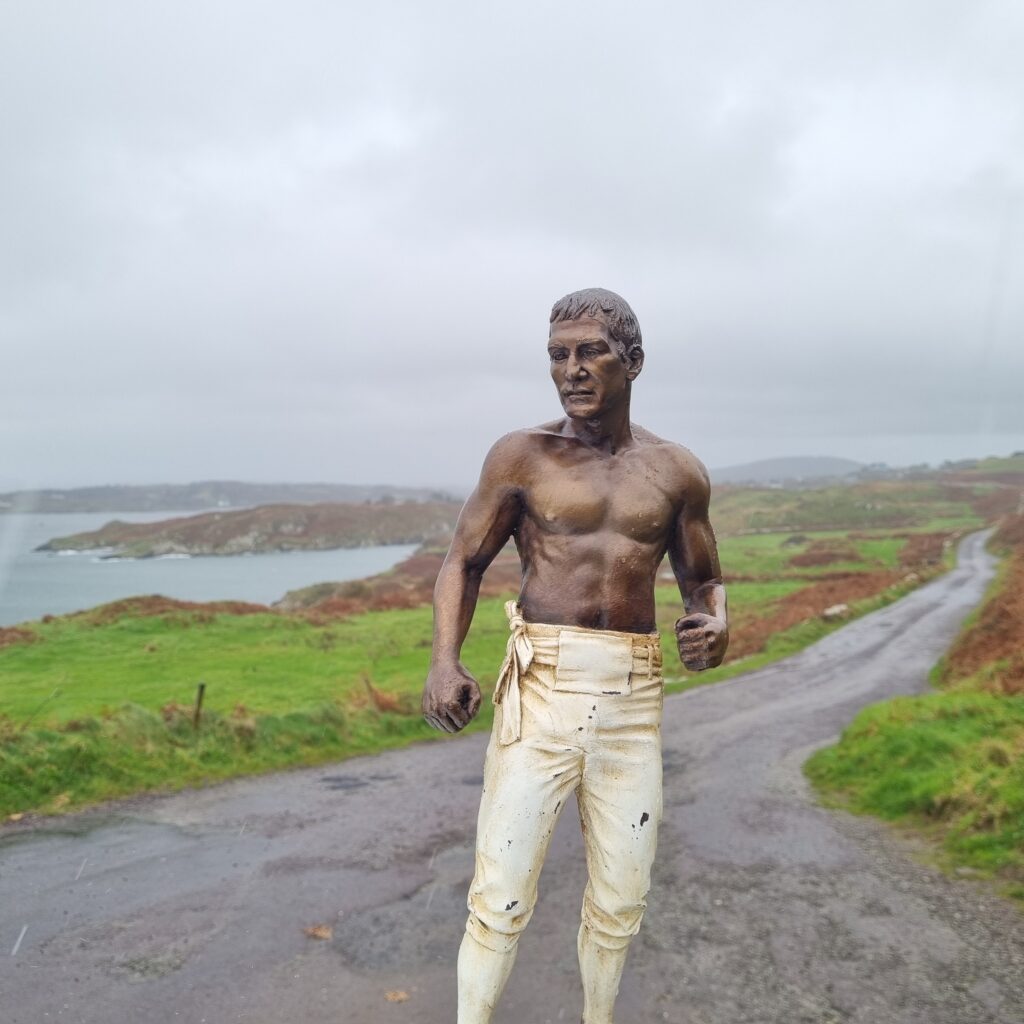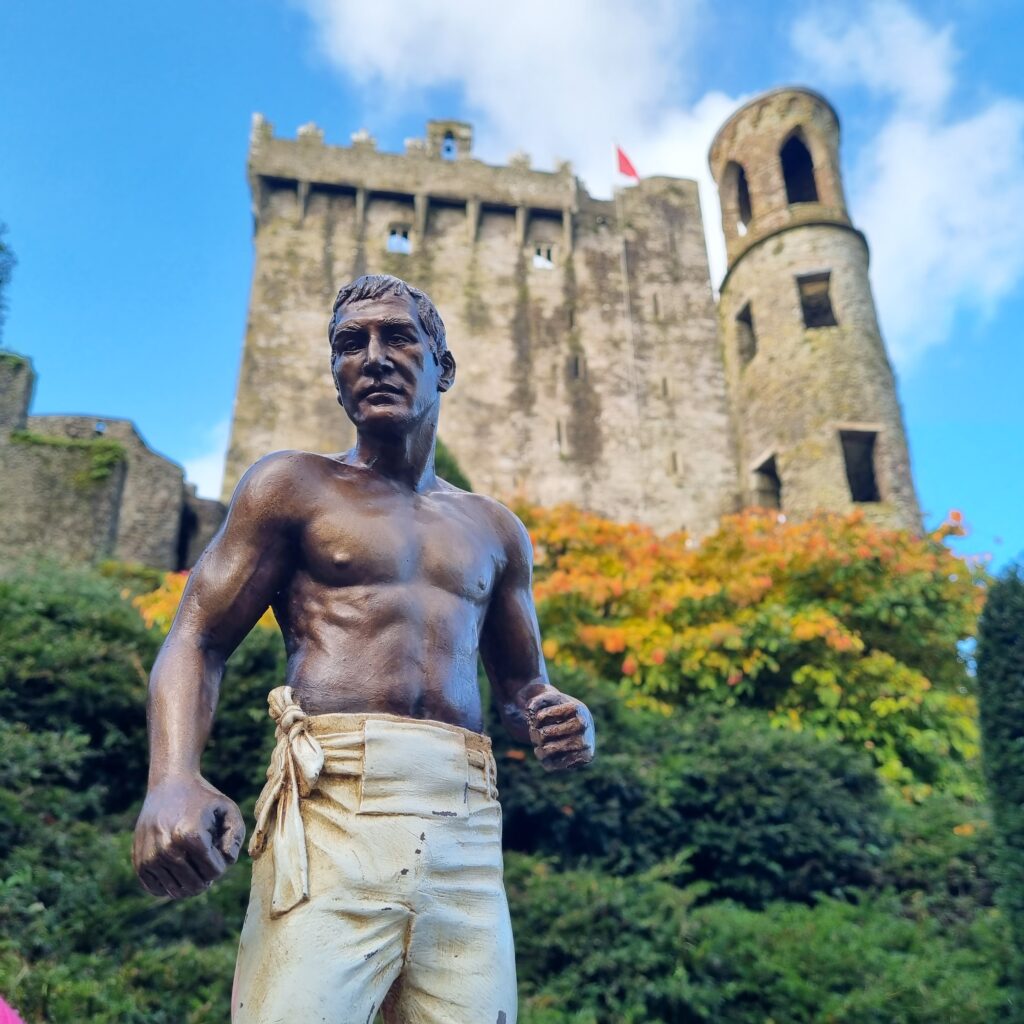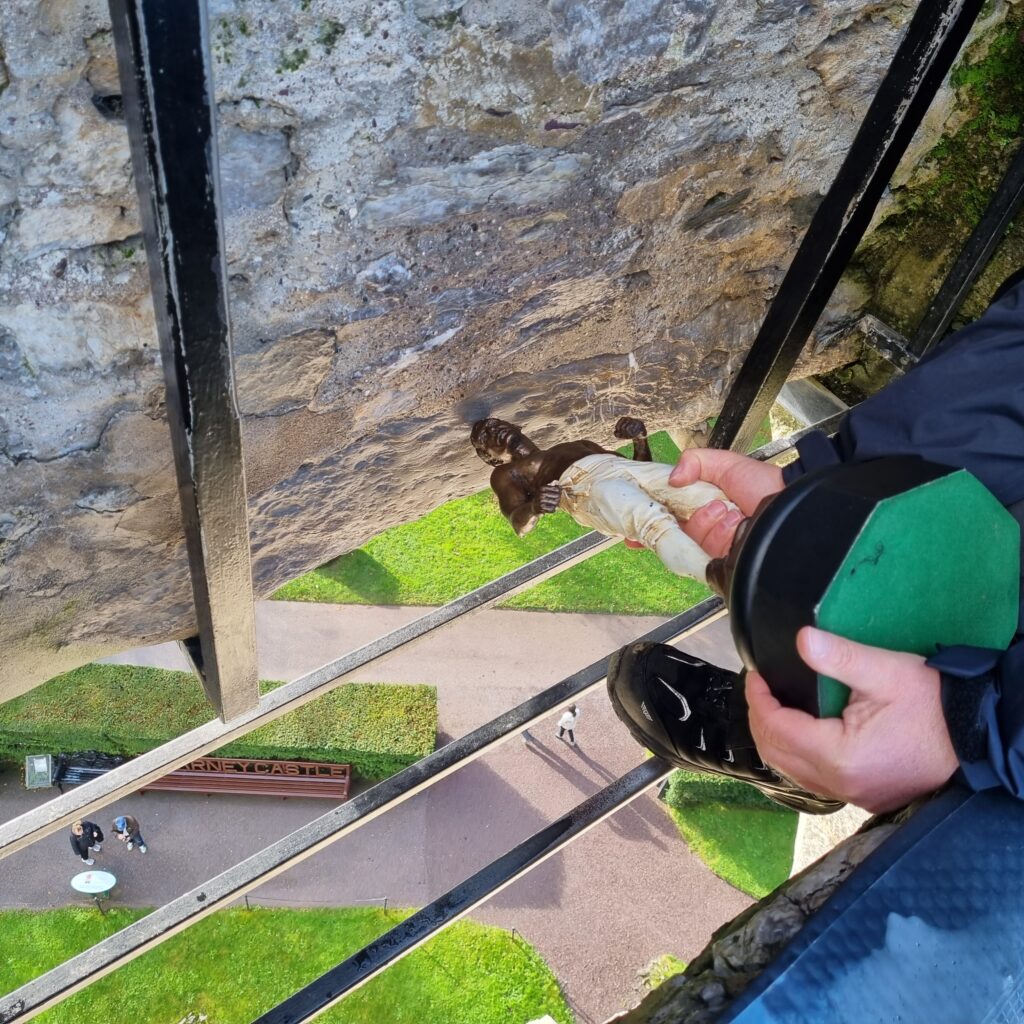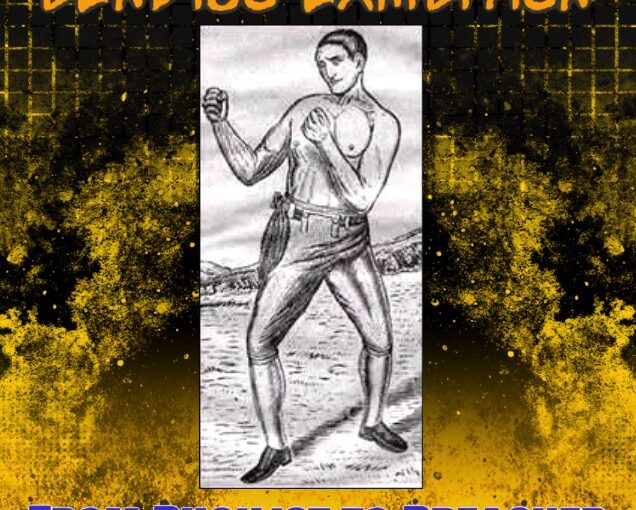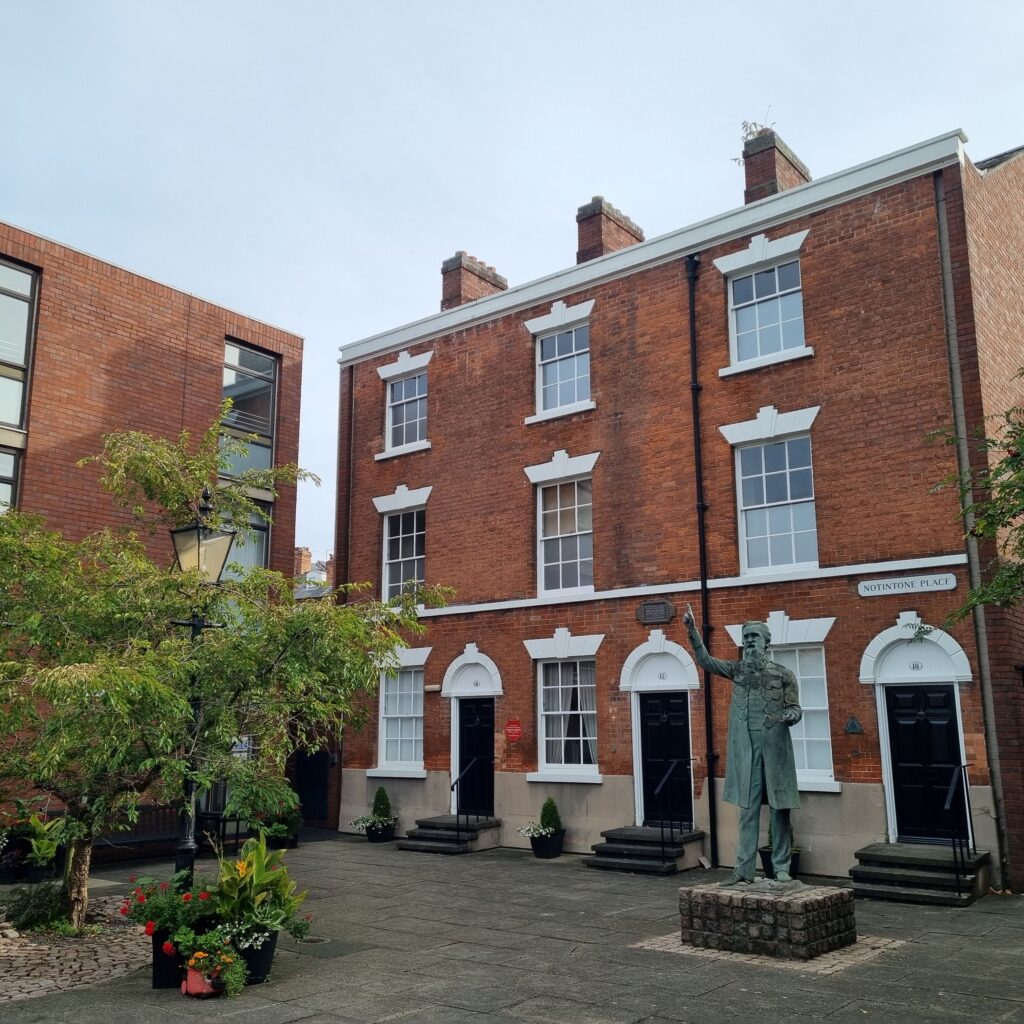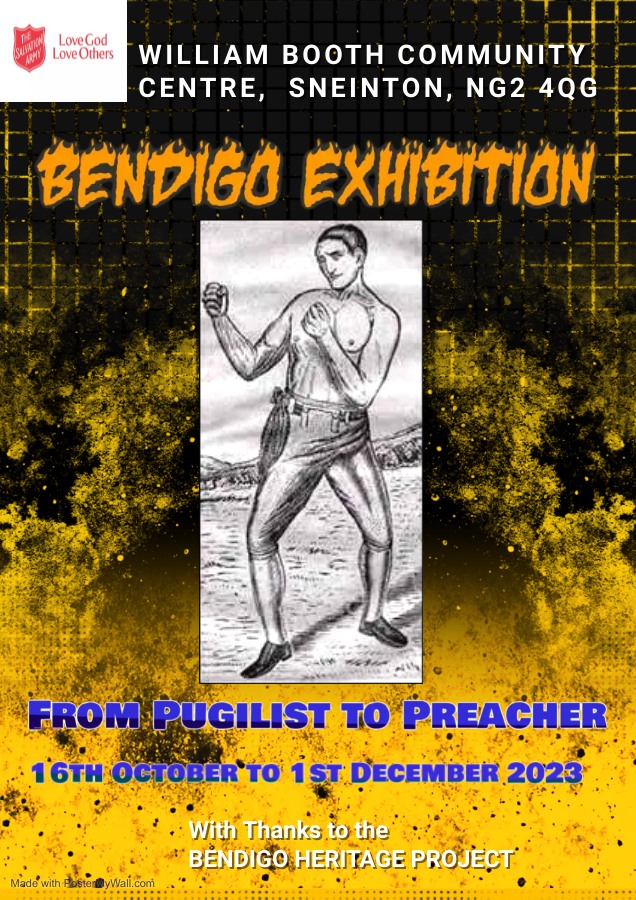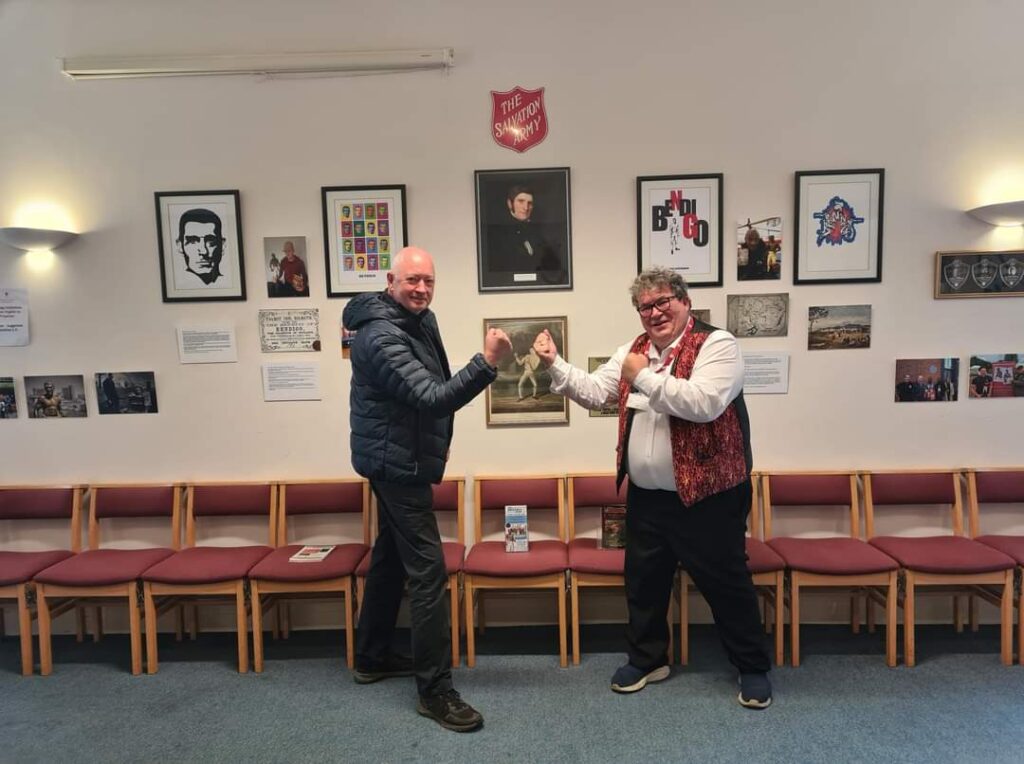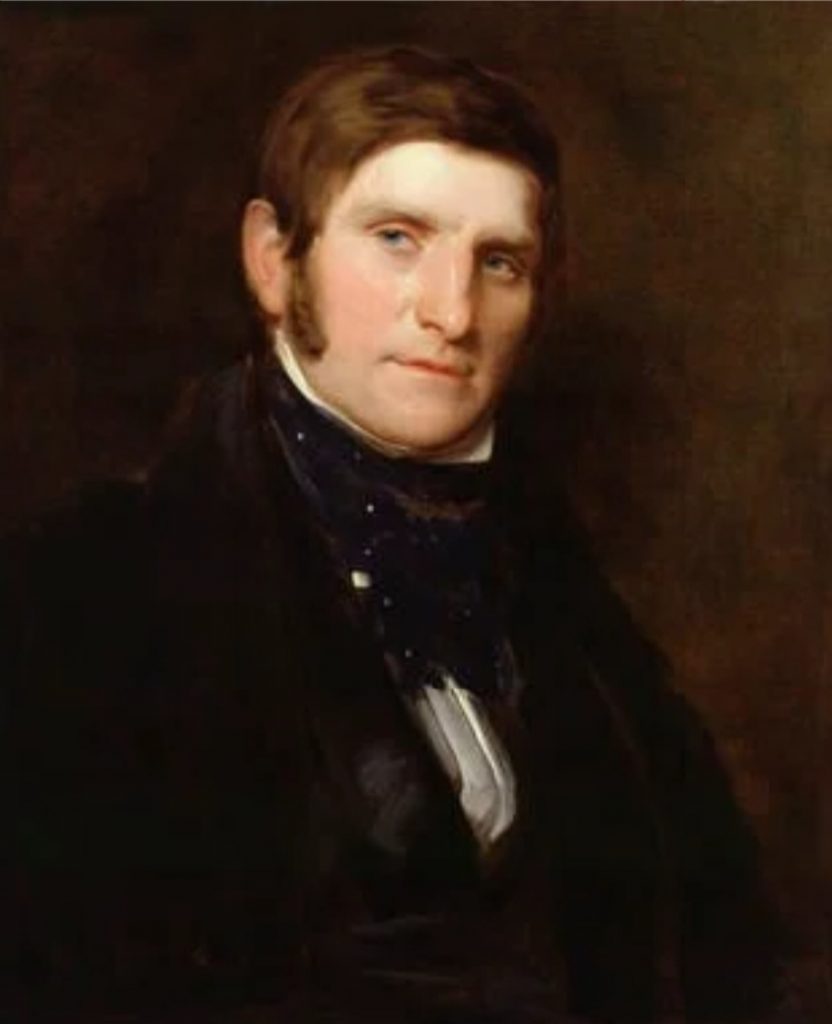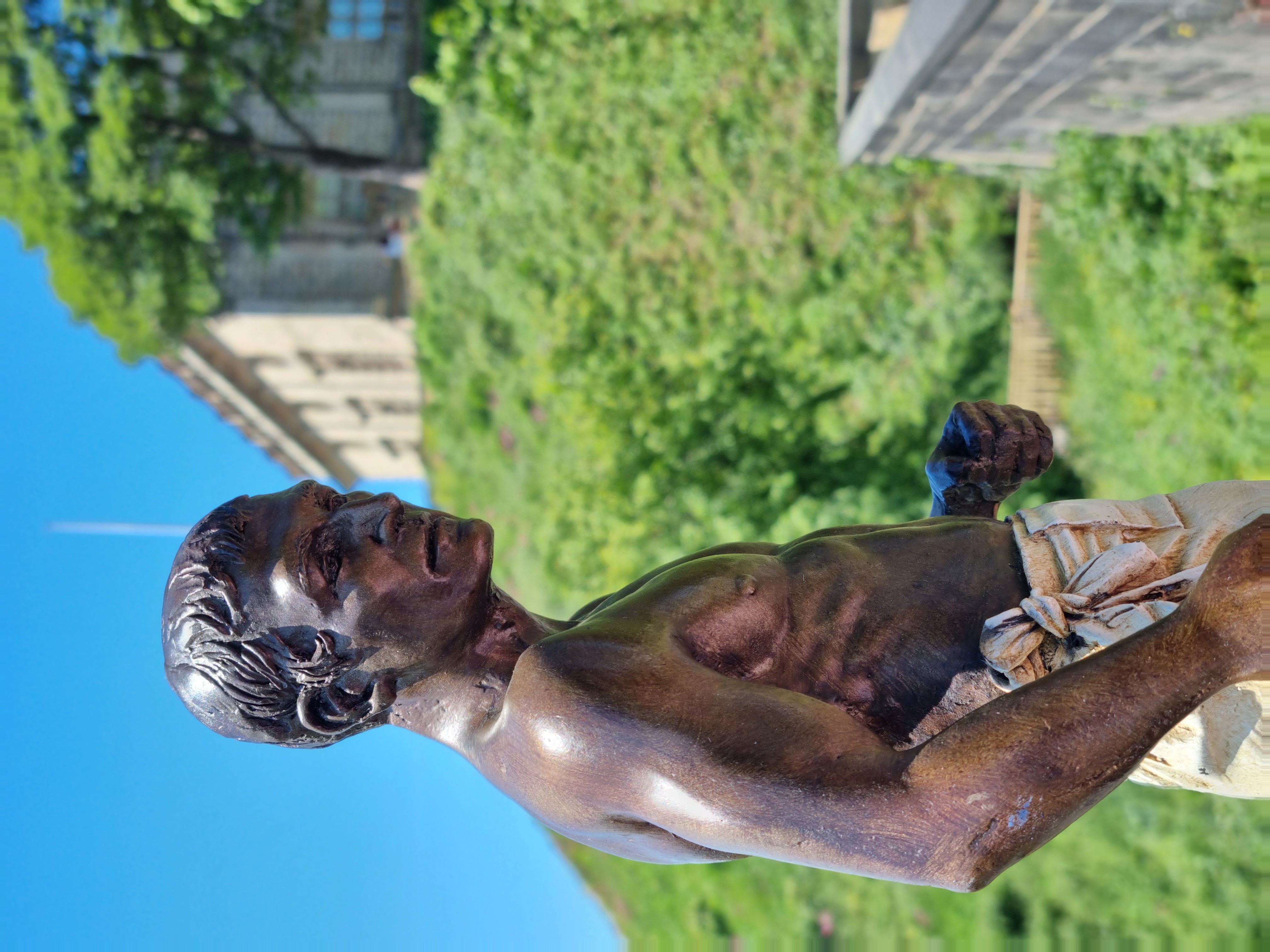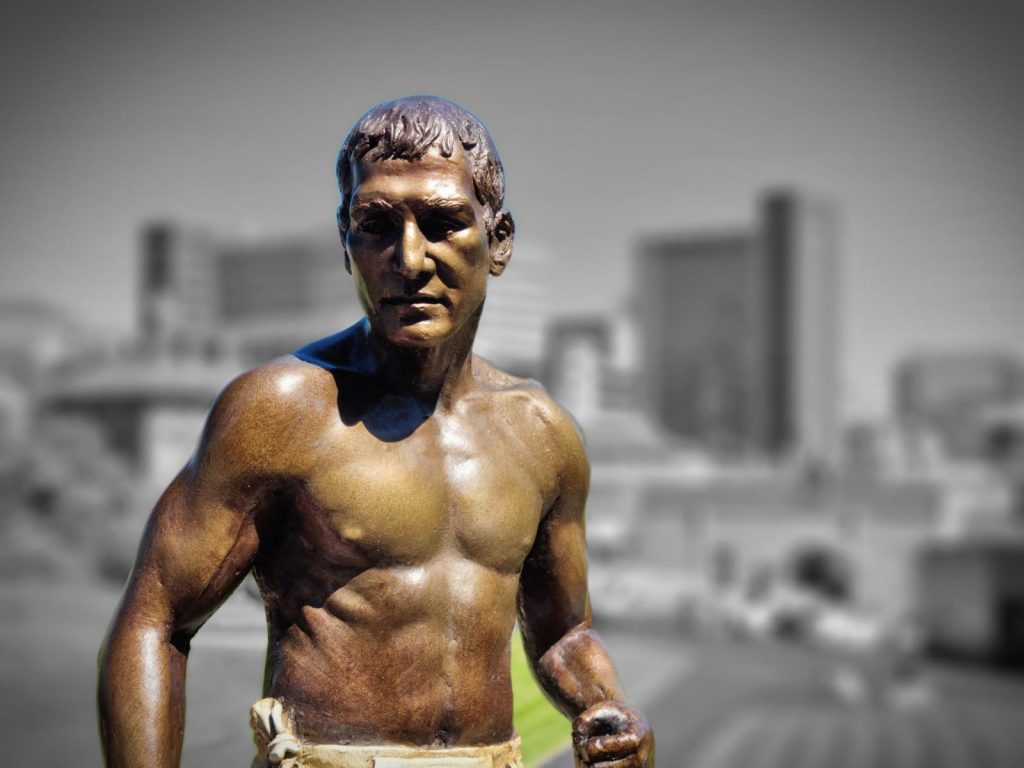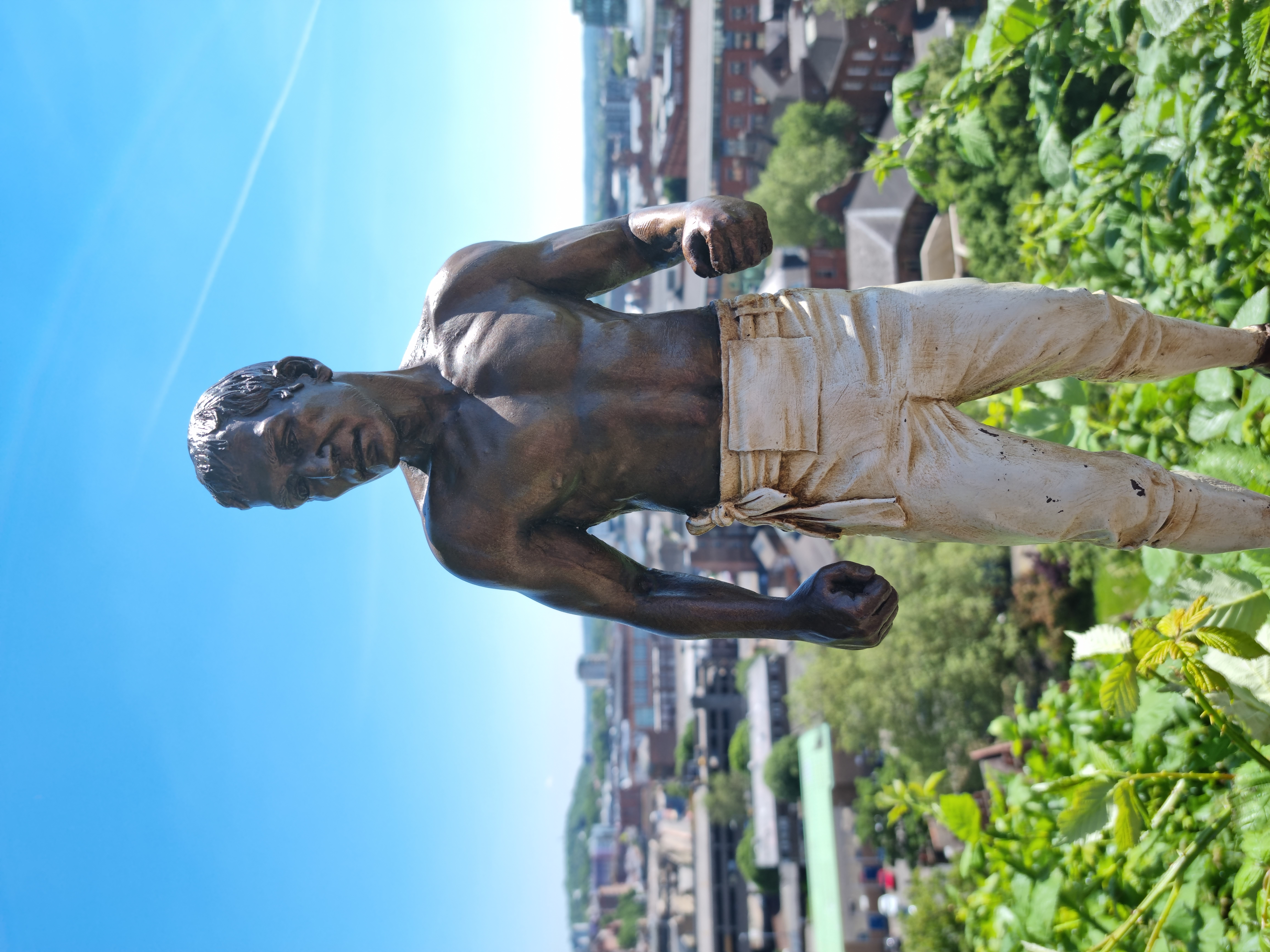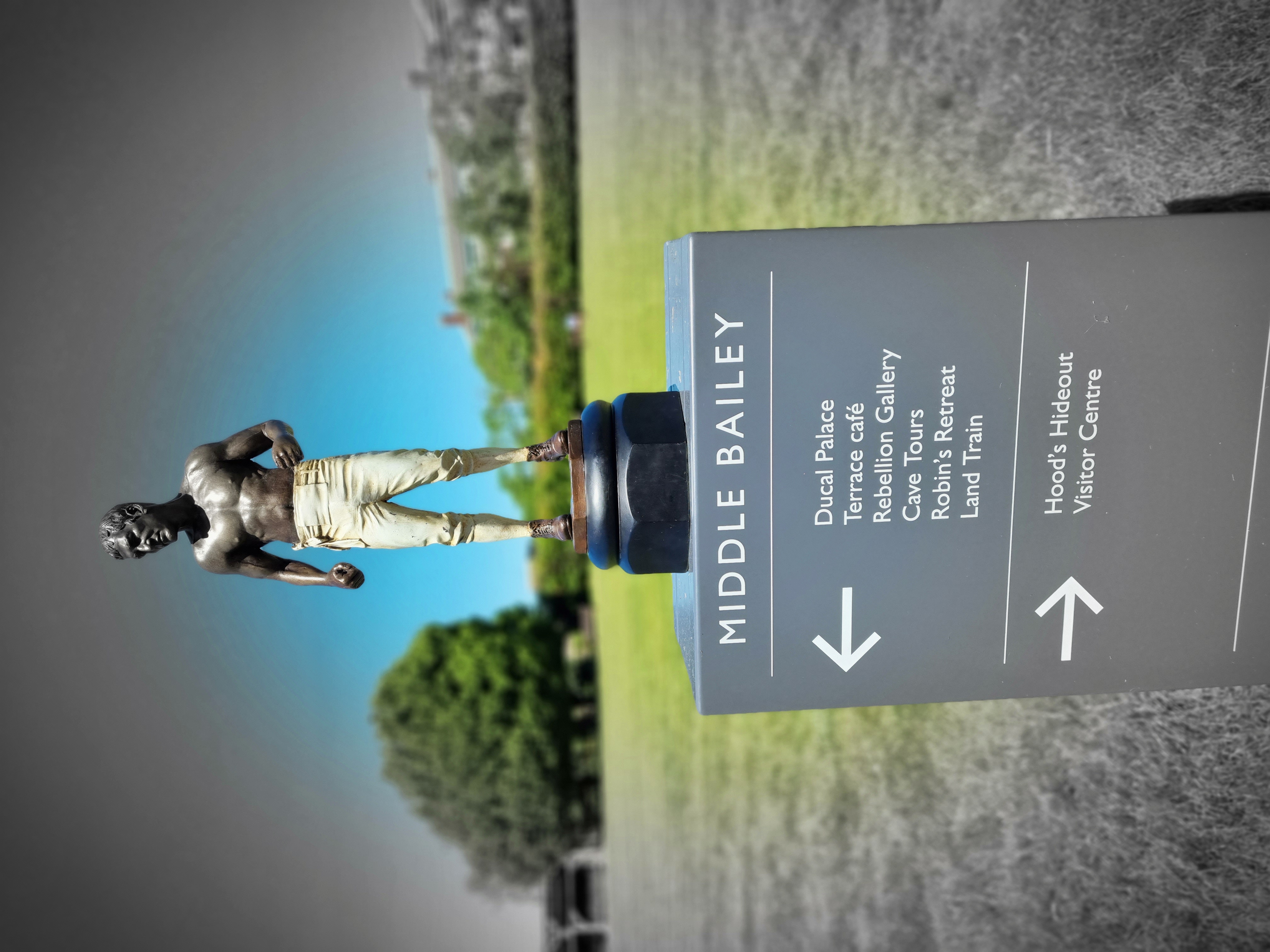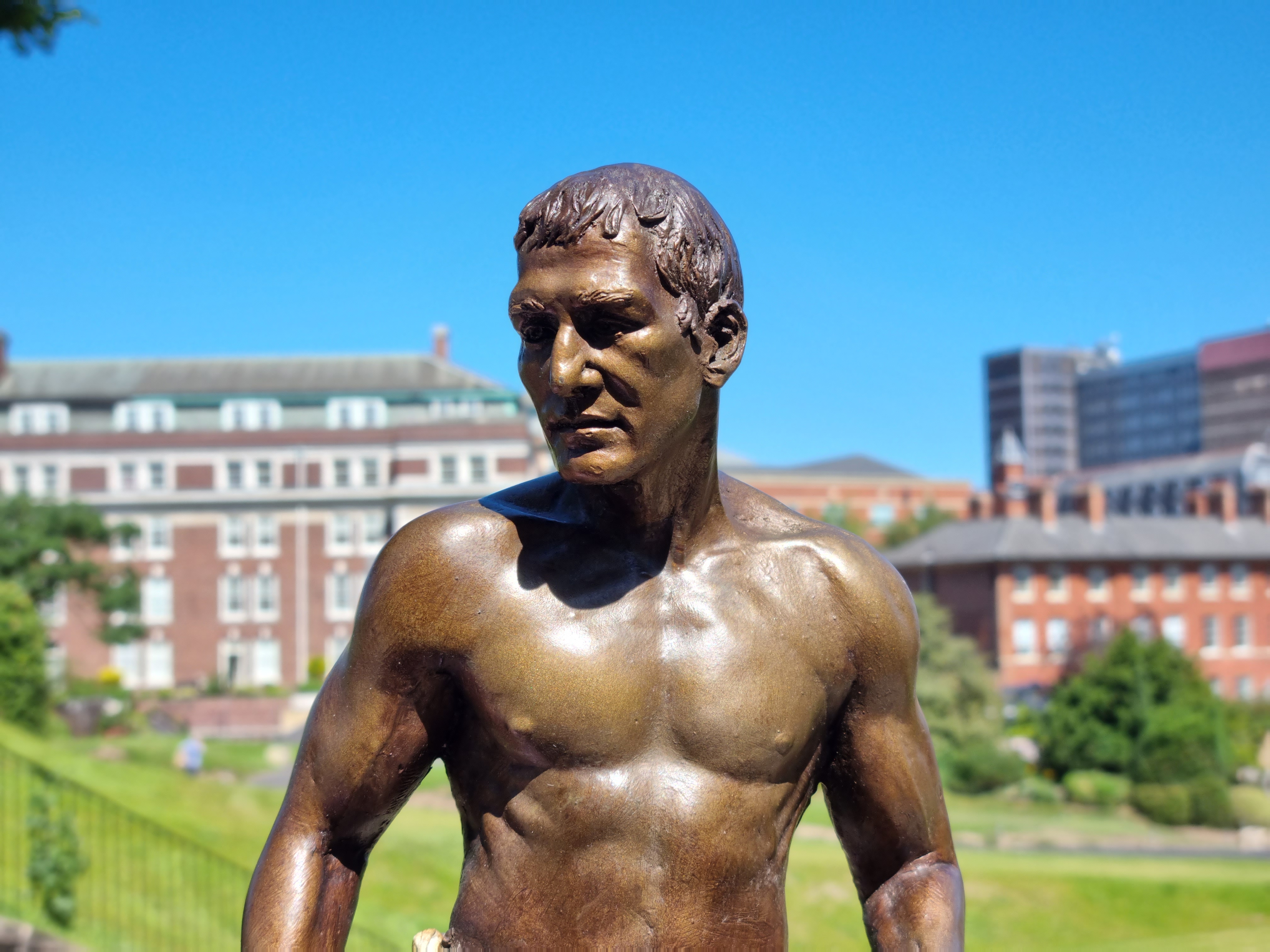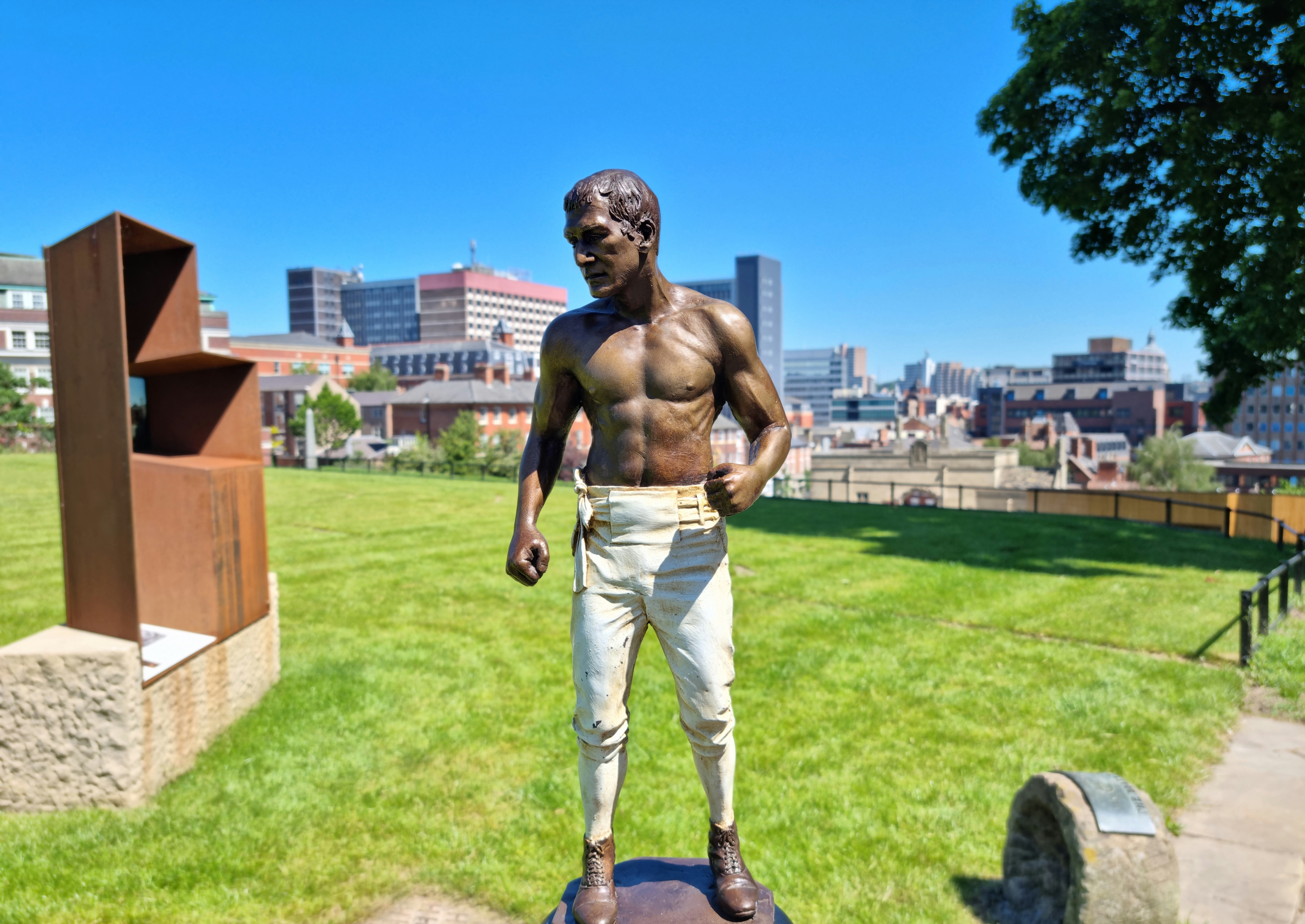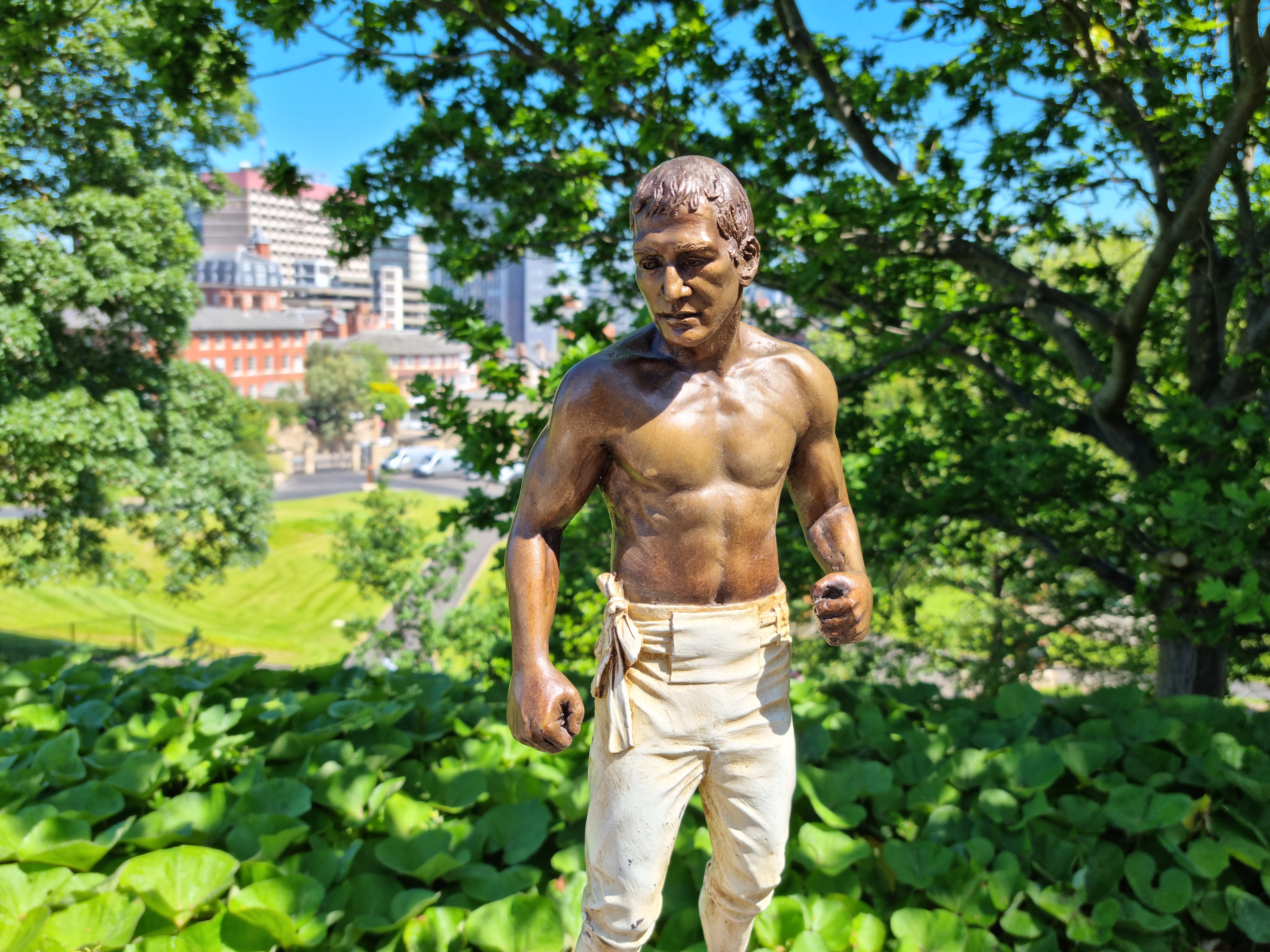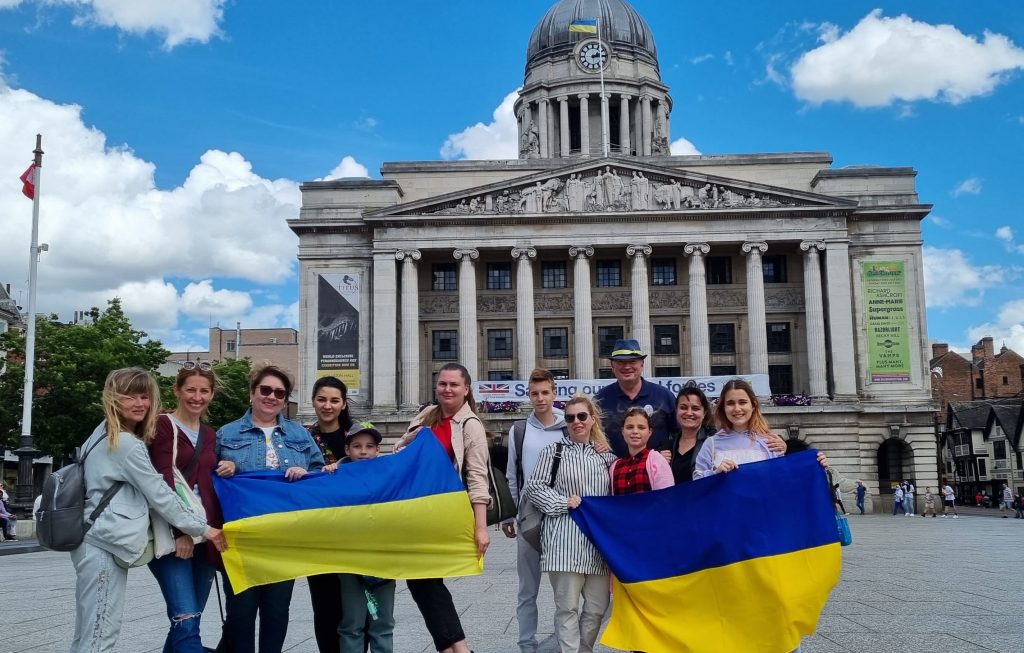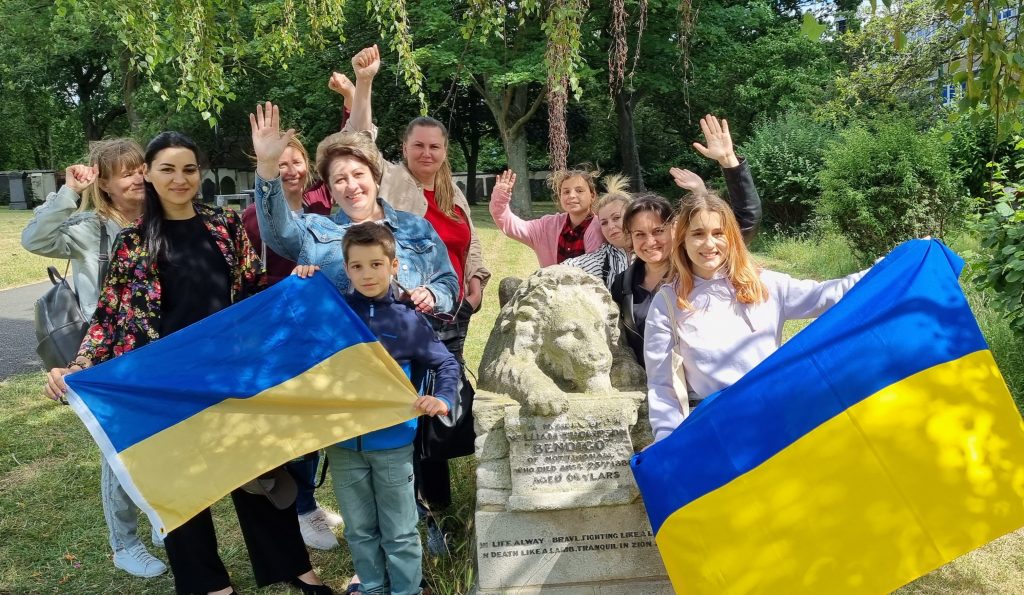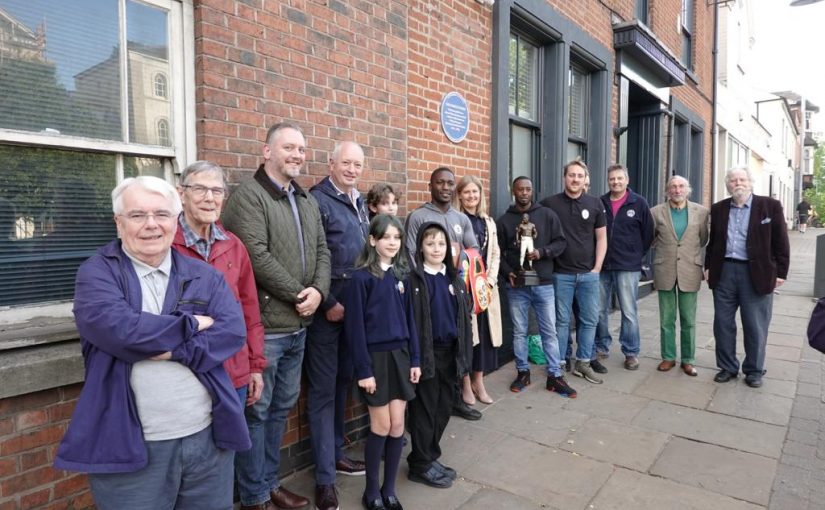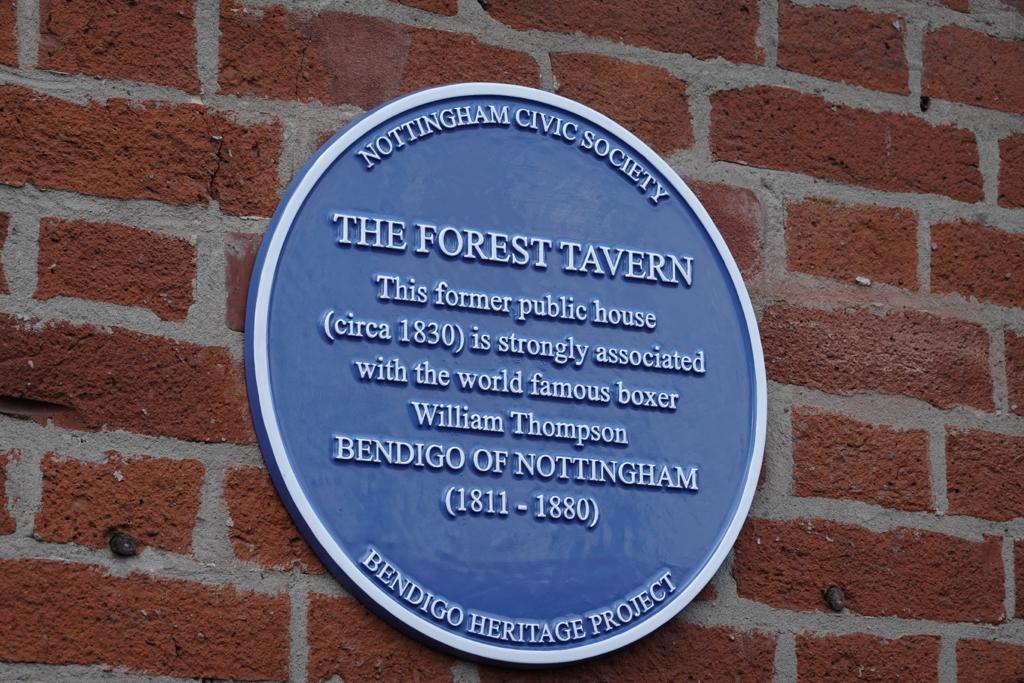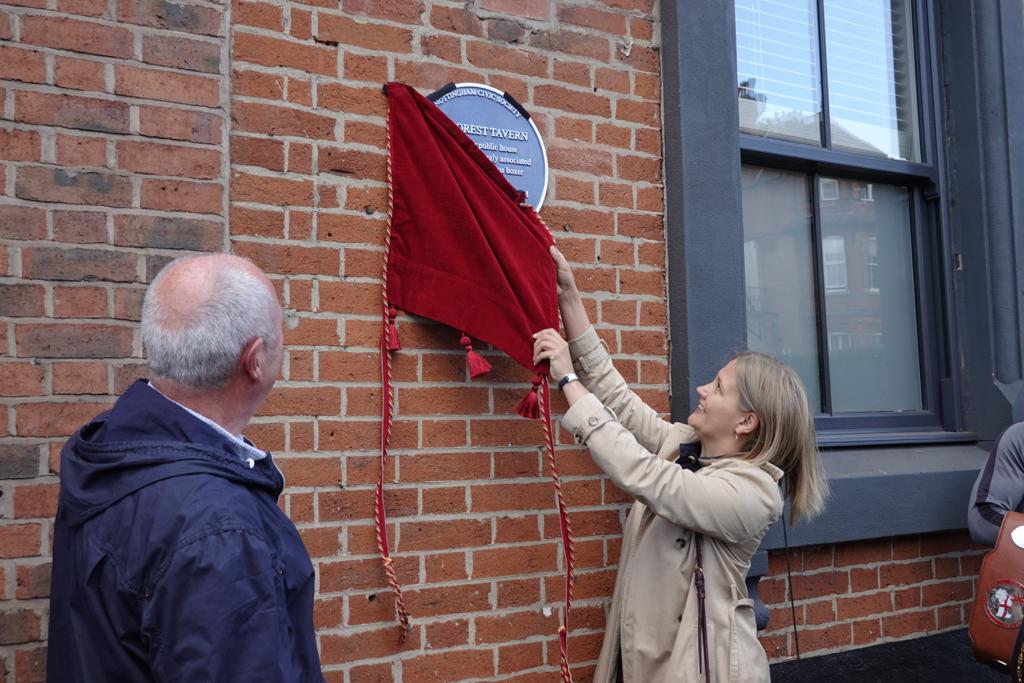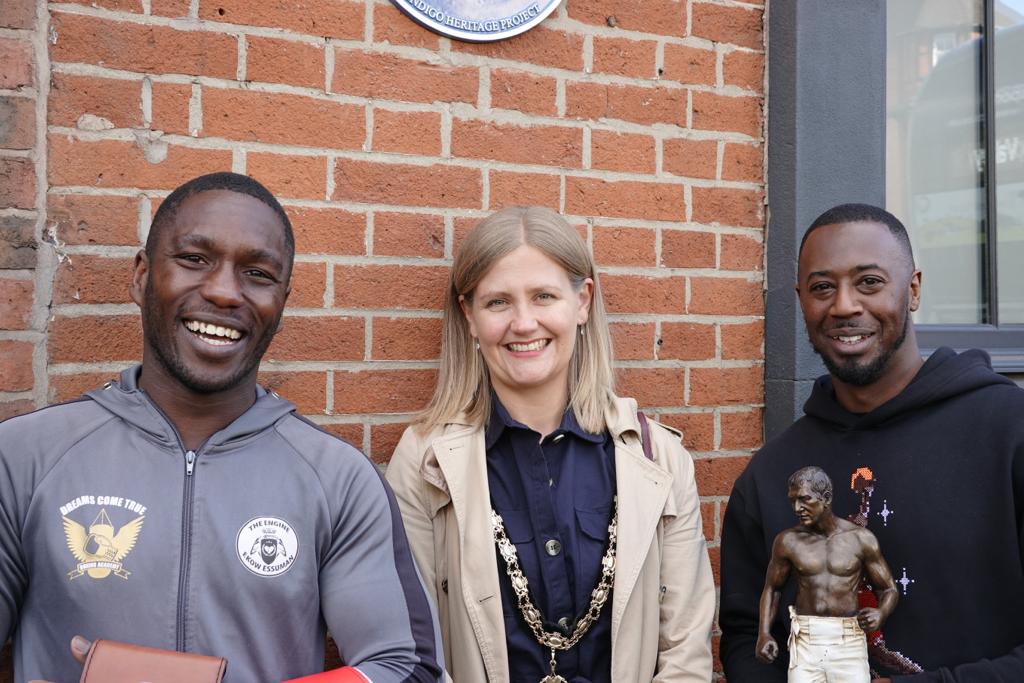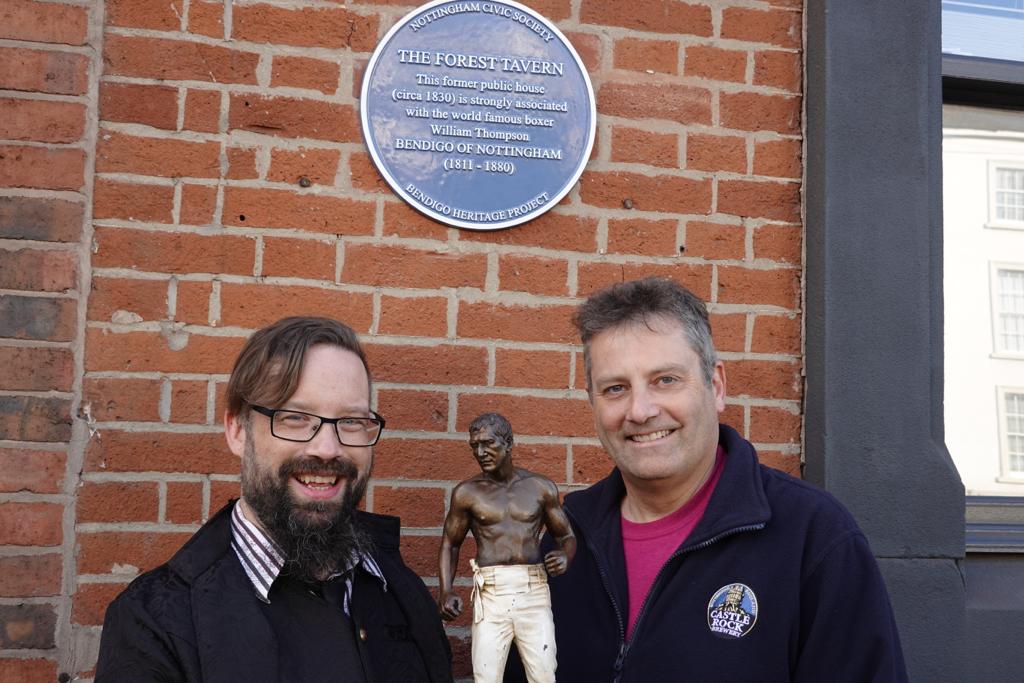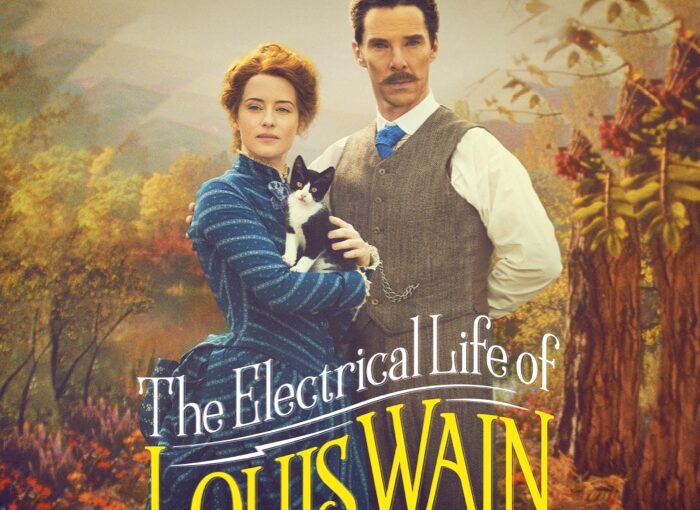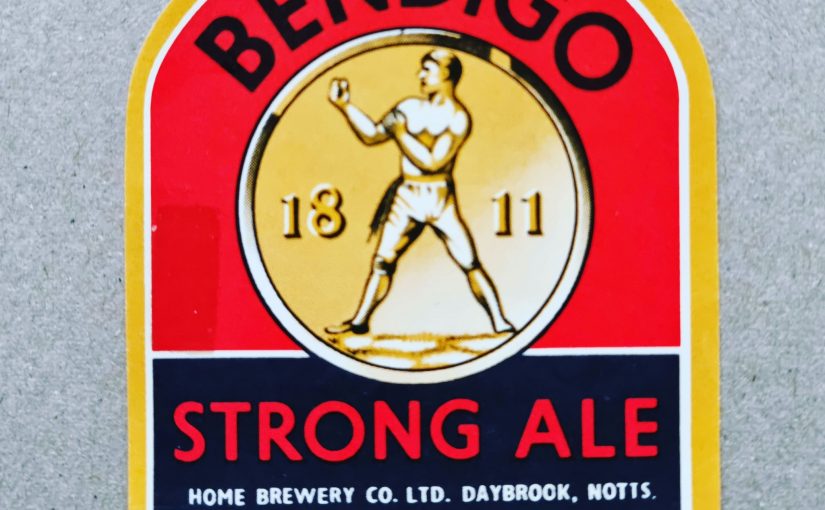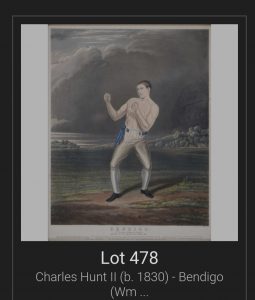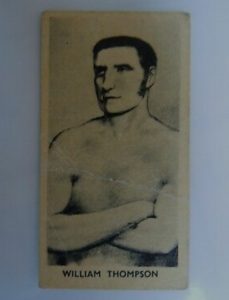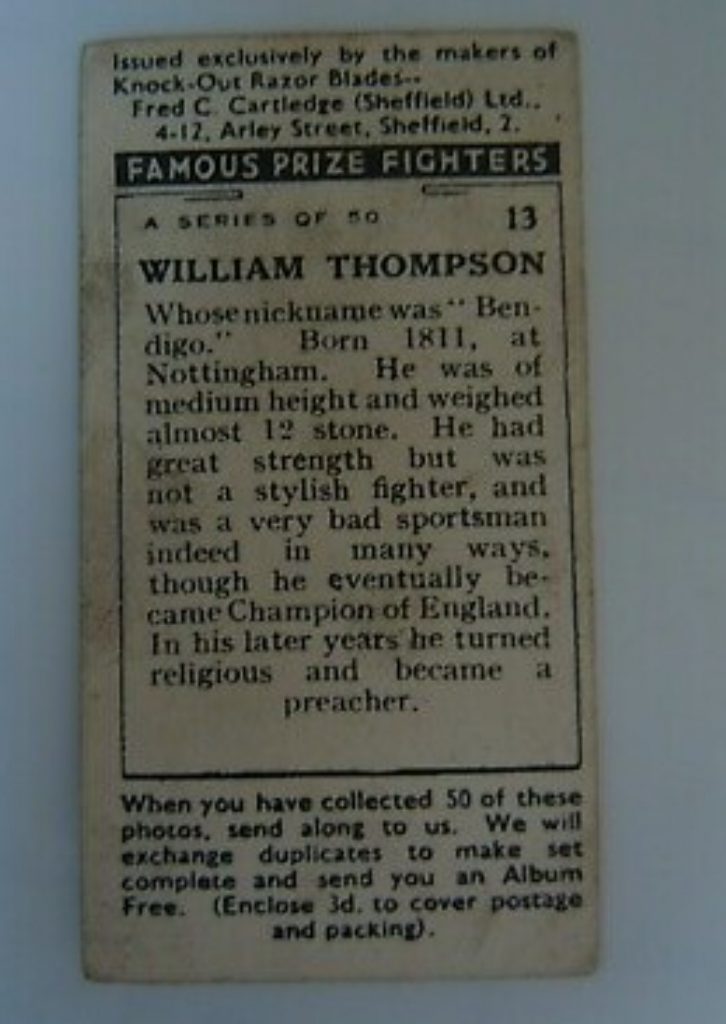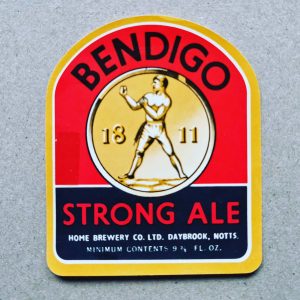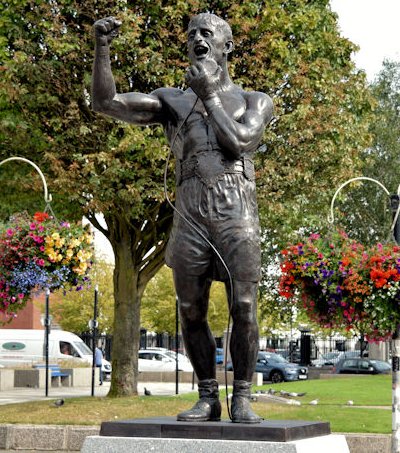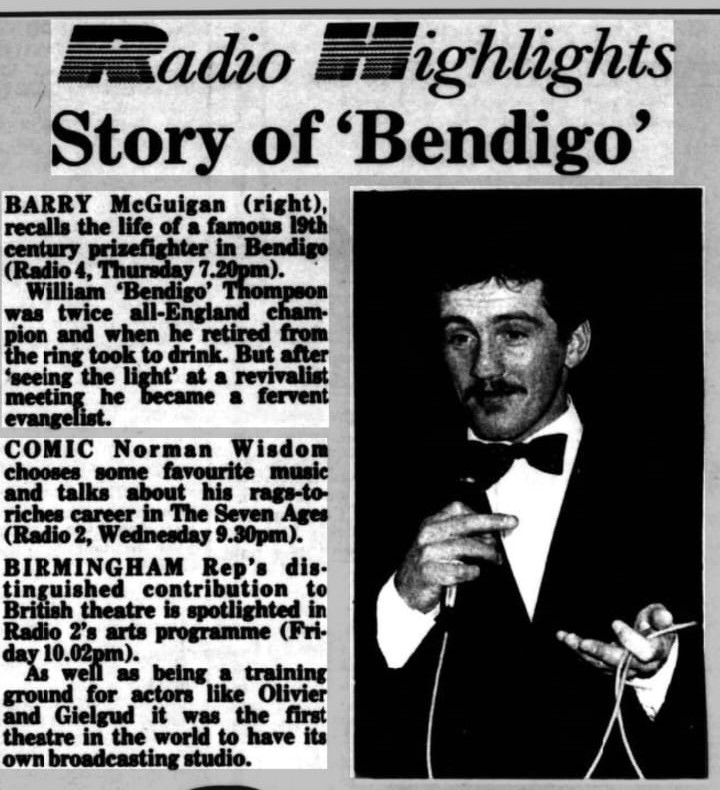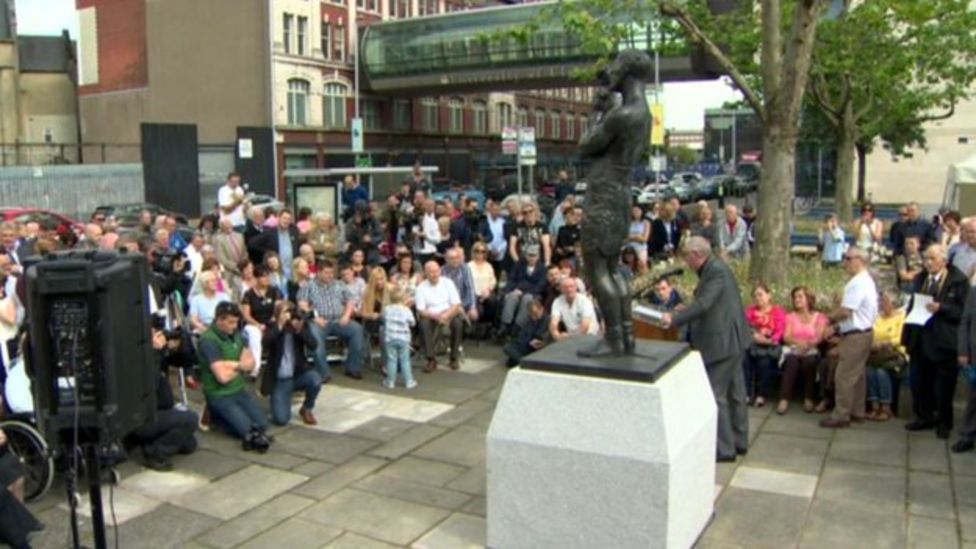The Bendigo Gallery is now available to view again in Nottingham City Centre.
The Bendigo Heritage Project has collected a number of images and artwork over the years. Any pictures that required framing, we have used Paramount Picture Framing and Gallery in Nottingham City Centre. Not only is their work of the highest quality, their gallery is on the historic Heathcoat Street which is very close to Bendigo’s grave and was almost certainly on the route of his funeral cortege in 1880.
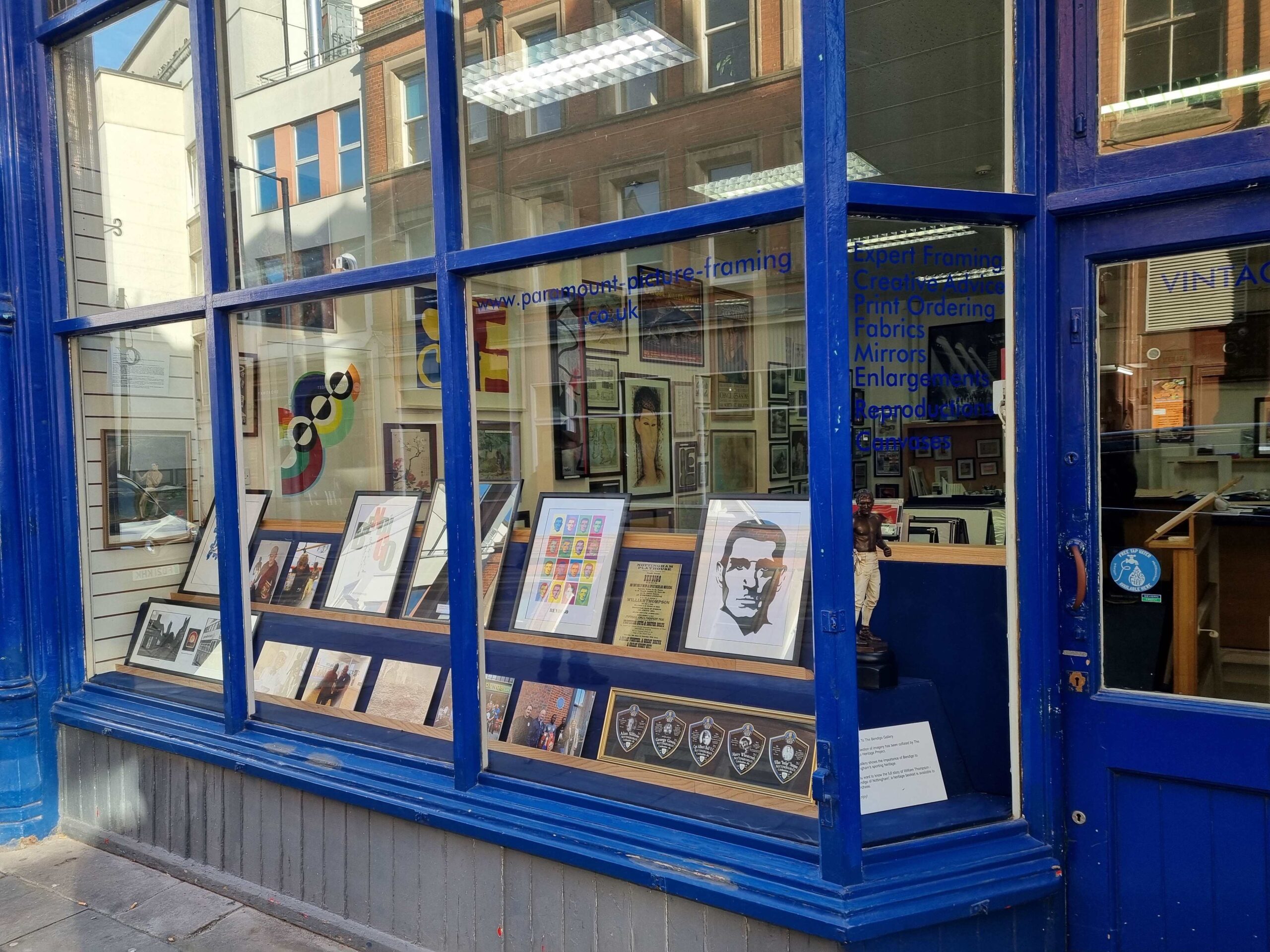
Our images range from photographs, modern art and even a high quality copy of the portrait (oil on canvas) of Bendigo from 1850.
We were pleased to accept the offer to display our collection in the shop window of Paramount, visible to passers by and even illuminated at night when the shop is closed.
The shop window at night. The Jam Cafe is a popular bar and music venue.
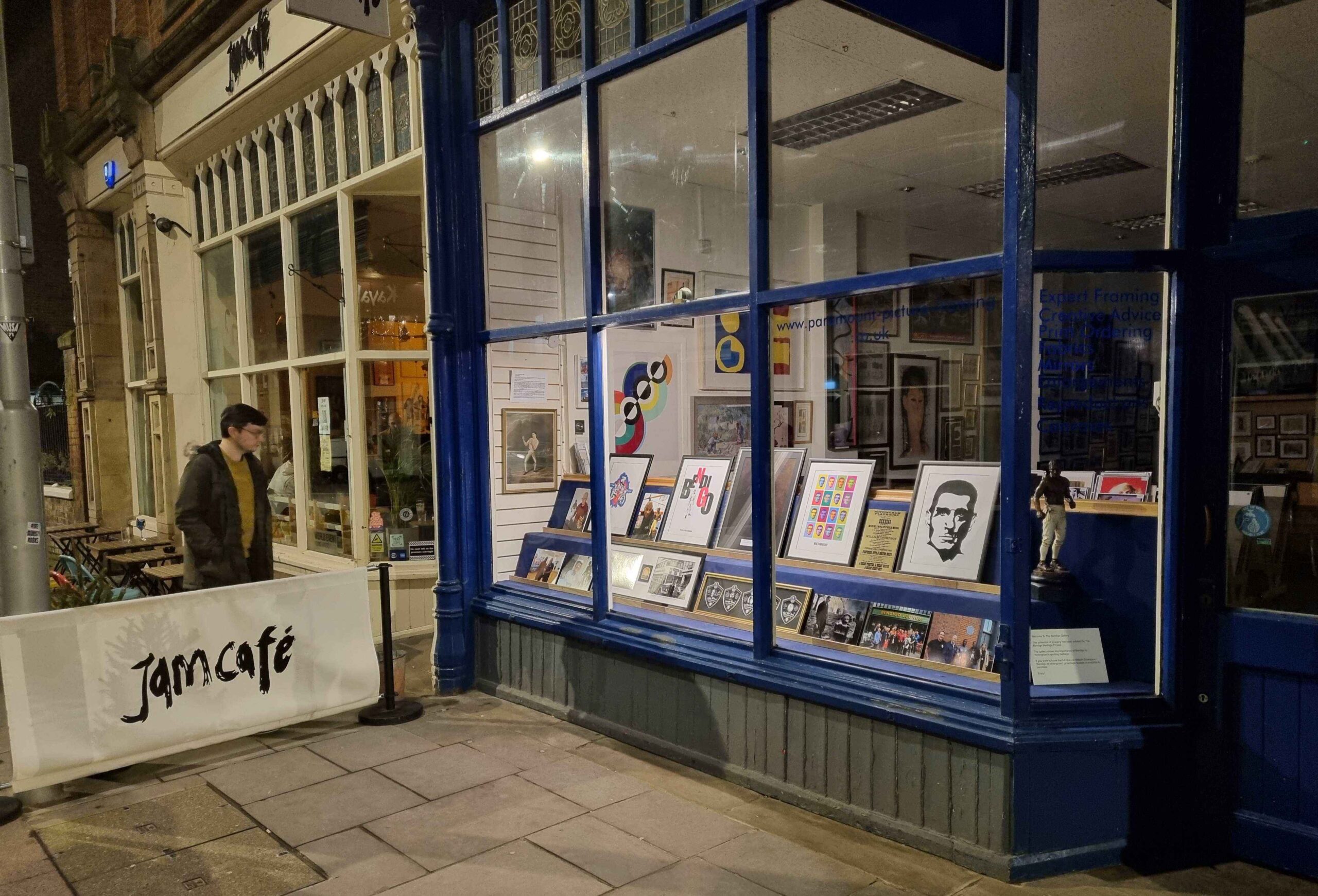
Paramount Gallery
Paramount was established in 1985. They offer a personalised and bespoke framing service. The framing is done on site and the premises also has a spacious, well-lit gallery with an extensive collection of prints and framed pictures on display. There are even some iconic photographs from sport, including boxing.
It is worth browsing the gallery as there are images from vintage magazine covers, classic rock & pop, travel posters, film, music and historical maps.
On the subject of history.
Heathcoat Street
Heathcote Street was (since 1387) called Beck Lane, part of an old agricultural road that led by the side of the Beck rivulet, away to the fields on either side of the valley now occupied by St. Ann’s Well Road.
In 1854 The People’s Hall on Beck Lane was founded by George Gill who bought the former mansion house. It had been used as a School of Art and Design before he altered and enlarged it. He used the hall for a variety of philanthropic purposes. It contained a library of ten thousand books.
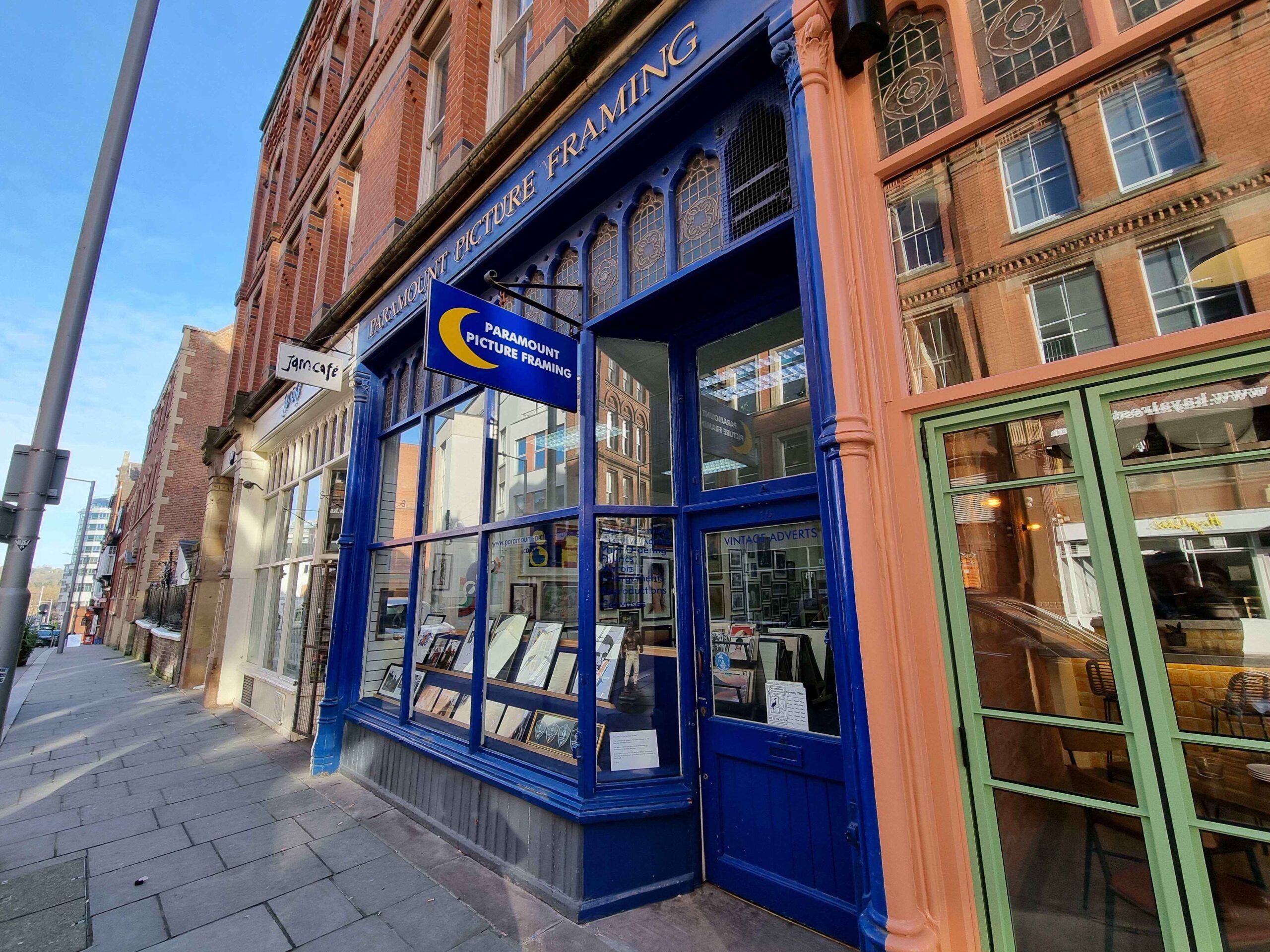
The People’s Hall is visible and just 30m from the gallery.
Just beyond the modern building in the distance is Bath Street and Bendigo’s grave.
In about 1874 (during Bendigo’s lifetime) Beck lane was widened and renamed Heathcote Street. It took its name from John Heathcote, a prominent lace manufacturer who first set up at a workshop nearby in the early 1800s.
Next to Heathcote Street is Broad Street where there are several bars and shops. The Broadway Cinema backs onto Heathcote Street. The cinema was originally The Broad Street Wesleyan Chapel, a Methodist chapel from 1839. It is where William Booth (the founder of The Salvation Army) attended a service in 1844 and chose to devote his life to the church from that point.
We hope you get the chance to visit Heathcoat Street while the Bendigo Gallery is on show.
Heathcoat Street is a five-minute walk from Nottingham’s Old Market Square and two minutes from the Lace Market tram stop. There is currently no parking on Heathcoat Street.
